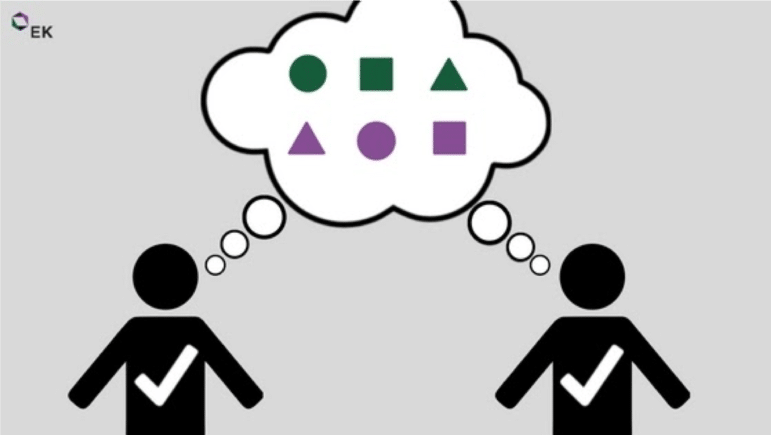In almost every taxonomy project, certain inescapable challenges arise. Many of these are the tangible business challenges, such as gaining stakeholder buy-in, configuring systems implementation and integration, drafting a governance procedure, and ensuring the business needs are met during every step of the process. But what about the challenges that deal with the murky waters of knowledge itself?
Human knowledge can often be unclear and contradictory. As taxonomists, we deal with information that can be incomplete, implicit, or ambiguous, and it is our goal to make this knowledge not only useful and intuitive for large groups of people, but to make it explicit and machine-readable. Before we can get there, however, we typically confront some very practical dilemmas: How do we get this ‘right’? How do we deal with ambiguity or complex domains? How do we gain alignment across an organization?
In this blog, I will share the common taxonomy design challenges that arise due to the nature of information and knowledge and how to overcome them – getting a taxonomy design just right for an organization, confronting ambiguity and domain complexity, and overcoming bias.
How to Get a Taxonomy Design Right
Every taxonomy design is different and unique to an organization, and thus requires multiple iterations to get it ‘right.’ Although some initial taxonomies are passable by industry standards for an organization’s domain, the first iteration doesn’t always quite connect the dots for how a specific organization delivers its services and organizes their business processes.
The simple fact is, it’s quite possible you’re going to get it wrong the first time. There’s no easy way around this. The best option is to accept and embrace iteration. Design Thinking, the human centered approach to solving problems at the intersection of people and technology, is an important aspect of taxonomy and ontology development for a reason; it is a necessarily iterative process because human knowledge is imperfect, it’s always changing, and we can’t always have the full picture. This is why we embed frequent design and validation sessions when designing taxonomies for our clients in order to fail-fast, learn early, and test our design hypothesis, ultimately presenting the taxonomy in ways that are meaningful to the users.
This approach allows us to question and release any attachments to existing designs or ways of thinking that no longer serve the project, especially as Agile methodologies are becoming more and more integral to the taxonomy and ontology process. Design Thinking approaches also allow us to consider all the touch points that are related to taxonomy – business processes, use cases, and personas that, while not a part of a taxonomy structure, provide the necessary context that will add value and ensure the design is user-centric. As designers, EK is adept at providing the right balance between effective industry practices for your organization’s domain while focusing on what should be adjusted in order to design a model that works for the people who will be using it. This is what EK refers to as a Business Taxonomy approach, which allows for more flexible adherence to traditional taxonomy rules in order to ensure that business values remain centered.
Complexity and Ambiguity: Is Domain Knowledge Required?
Imagine you’re the taxonomist for the legal team in a large retail organization. You’ve been tasked with building a taxonomy that will help the legal team organize and retrieve their contract templates. Obviously, the legal domain is a complex and highly varied field that requires years of study and practice to master. While you can, and should, rely heavily on the expertise of the legal team to understand the type of content you need to organize, in the end, it’s not your goal to master all the intricacies of legal documents, their clauses, jurisdiction, and Latin nomenclature. Your goal is to understand the team’s needs and the ways a taxonomy can meet those needs.
 It’s not feasible for taxonomists to know everything about the domains we model. In fact, I would argue it is important for taxonomists to resist knowing everything, though we may feel obligated to learn everything about a domain. While taxonomists must take time to research and quickly know the basic concepts, it is all too easy to lose sight of the ultimate goal: to provide a usable taxonomy that delivers the intended business outcomes for the organization. This is why the best taxonomies and ontologies involve input from subject matter experts and end-users, and should never be constructed in isolation by one individual. The users and subject matter experts know the nature of the content and can help ensure the taxonomy is complete, while taxonomists focus on building the structures that will make that content usable, discoverable, and even more valuable.
It’s not feasible for taxonomists to know everything about the domains we model. In fact, I would argue it is important for taxonomists to resist knowing everything, though we may feel obligated to learn everything about a domain. While taxonomists must take time to research and quickly know the basic concepts, it is all too easy to lose sight of the ultimate goal: to provide a usable taxonomy that delivers the intended business outcomes for the organization. This is why the best taxonomies and ontologies involve input from subject matter experts and end-users, and should never be constructed in isolation by one individual. The users and subject matter experts know the nature of the content and can help ensure the taxonomy is complete, while taxonomists focus on building the structures that will make that content usable, discoverable, and even more valuable.
How to Gain Alignment in Taxonomy Design
Involving these key audiences brings me to the next point: overcoming bias and gaining alignment. Knowledge is inherently collective and relational. You’ve gathered end users and subject matter experts, and you’re committed to gathering their input for the taxonomy. Great! But, who isn’t seeing your design? Whose perspective is missing? This is more than having a diverse representation in your meetings and focus groups; it is about minimizing unconscious bias and democratizing the ownership of the design.
Bias often appears in taxonomies when they are constructed in a silo with a specific purpose or use case in mind. This becomes a problem when those taxonomies are considered for use across an enterprise. Typically, this situation often takes the shape of a region’s dominant vocabulary (say, North America) becoming the standard for the global business, supplanting the language and terminologies of smaller teams across the world. Forcing these teams to adopt certain vocabularies could potentially isolate them and widen the information gap. Alternatively, when done ‘right,’ taxonomies can be used as an opportunity to accommodate varying terminologies and find alignment across teams in order to achieve a common goal.
A core component of EK’s taxonomy design strategy is a bottom-up and top-down analysis, which can help navigate the potential pitfall of bias. The bottom-up approach allows you to become familiar with the systems and content that will be impacted by a taxonomy, and may include information that may not be directly accessible by the project managers of a taxonomy project. The top-down analysis, such as conducting extensive focus groups and interviews across an organization’s business units or geographical locations, captures a holistic picture of the pain points different types of users face when interacting with their info rmation. Further, once an initial design is completed, activities such as card sorting and test tagging can be used to validate the taxonomy, ensuring that the design is intuitive and usable for as many people as possible. These validation activities then inform the next iteration of the design, which can drive consensus as more perspectives are incorporated. The resulting taxonomy is ready to be deployed and can enable the organization to advance into ontologies and knowledge graphs, which are a key pillar for Enterprise Artificial Intelligence.
rmation. Further, once an initial design is completed, activities such as card sorting and test tagging can be used to validate the taxonomy, ensuring that the design is intuitive and usable for as many people as possible. These validation activities then inform the next iteration of the design, which can drive consensus as more perspectives are incorporated. The resulting taxonomy is ready to be deployed and can enable the organization to advance into ontologies and knowledge graphs, which are a key pillar for Enterprise Artificial Intelligence.
Conclusion
Overall, these design challenges are best overcome by utilizing Design Thinking processes and understanding the pains and frustrations that users are facing, and the specific tasks they are trying to accomplish. By staying close to the users, the path forward often becomes clearer by shifting the focus from how you are designing, to why you are designing. If you experience frequent disagreements on a design, think of it as an opportunity to reframe the discussion and find alignment. Recall, failure is inevitable and it is best to embrace it, iterate, and take advantage of Design Thinking strategies to overcome challenges and deliver a user-centric design.
Are you dealing with these specific challenges in creating a taxonomy or knowledge management strategy for your own organization? Contact Enterprise Knowledge to see how our expert team of taxonomy designers and knowledge management strategists can create a custom solution to meet your goals.

